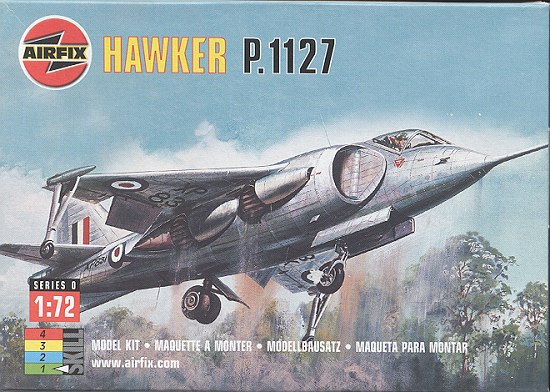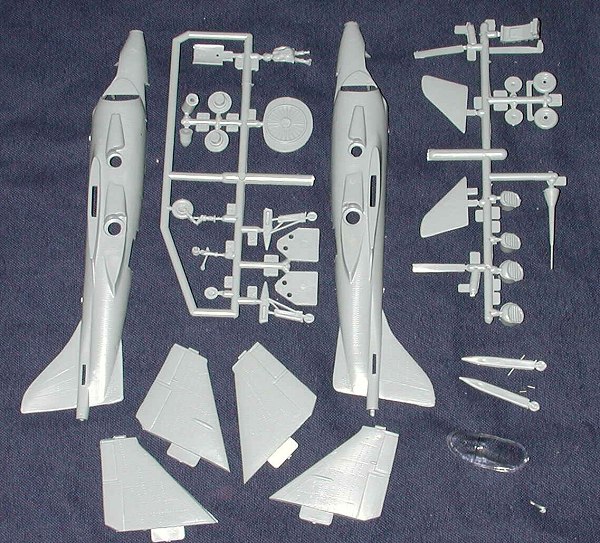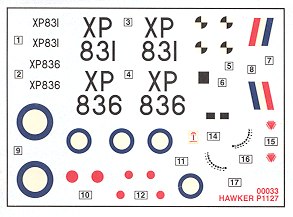
|
KIT: |
Airfix 1/72 P.1127 Kestrel |
|
KIT # |
00033 |
|
PRICE: |
£ |
|
DECALS: |
One aircraft |
|
REVIEWER: |
|
|
NOTES: |
A real oldie reissued |

|
HISTORY |
|
THE KIT |

This is a real trip into the past. The Kestrel was one of Airfix's old Series
One kits. That meant basic airframe, minimal detail as it was intended to be
built and played with in a single day. As you can see from the parts layout
above, the kit is rivet city with the few panel lines being limited to the
control surfaces; those on the wings recessed and on the tail, they are raised.
There are a few places where the impression of the ejectors on the inside of the
fuselage have translated into bumps on the outside. To eradicate them means
removing 'detail' so be prepared to sand and rescribe the entire model if you
care at all about a modicum of accuracy. There are also sink marks on the thick
bits and ejector pin marks on all the other parts. Interior consists of a pseudo
seat and pilot. Period. Gear wells are mere depressions in the plastic with no
detail. Both in-flight and on ground outriggers are provided, but no stand to
display the aircraft on. You also have a choice of pointy nose instrument probe
or the standard rounded one as well as optional tail cones. If you are careful
in gluing the exhaust nozzles can be rotated. The wheels are OK, but the main
ones have large holes in them for the axles. A very clear single piece canopy is
provided which is quite thick and will properly distort the interior so you can't see the lack of detail.
properly distort the interior so you can't see the lack of detail.
The instructions are more than adequate to build the kit with all colors provided as Humbrol numbers, so those of us who don't use Humbrol paints will have to make a guess. There is no decal placement guide or overall painting instructions. However there is a large additional sheet of warnings in multiple languages so that we don't try to eat the plastic parts or mix glue in with our cereal or do self-appendectomies with our X-acto knives. Apparently that is more important than knowing where the decals go. One will have to rely on the box art and then scrounge photos of the plane from other sources to figure out where the rest of the decals go. The decals are well printed and offer markings for two planes. Obviously some of the optional bits go with one serial and one with the other, but I'll never know which goes with what, thanks to the lack of a decal placement guide. Anyway, they look thin and should go on with minimal fuss.
|
CONCLUSIONS |
This is a kit for collectors who don't want to pay a fortune for the older version, for those wanting a slap together model and for masochists who think they can make a quality model out of a really old Airfix kit. I'm sure the latter can be done, but not easily and not without robbing a lot of bits from a Harrier kit to make up for what's lacking in this one.
If you would like your product reviewed fairly and fairly quickly by a site that has 200,000 visitors a month, please contact me or see other details in the Note to Contributors.